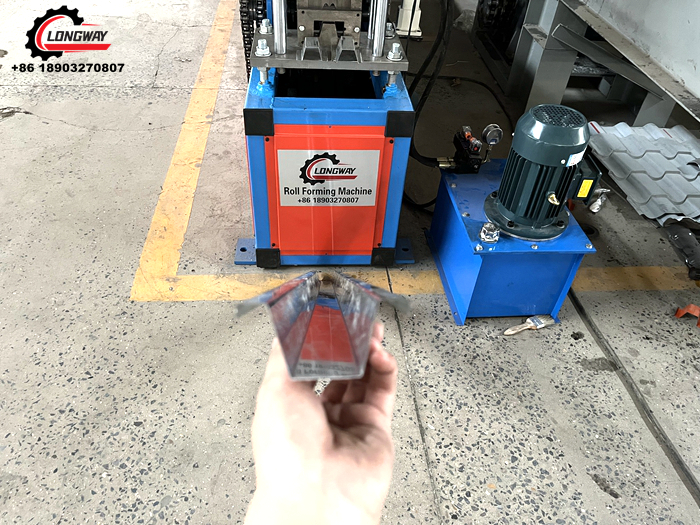Innovative Applications of Cold Formed Steel in Modern Machinery Design and Manufacturing
Understanding Cold-Formed Steel in Machine Design
Cold-formed steel (CFS) has become an essential material in modern machine design, owing to its unique properties and advantages. Unlike hot-rolled steel, which is processed at high temperatures, cold-formed steel is shaped at room temperature, leading to a number of beneficial characteristics that make it ideal for various applications in the machinery sector. This article delves into the advantages, applications, and manufacturing processes associated with cold-formed steel in machine design.
Advantages of Cold-Formed Steel
1. High Strength-to-Weight Ratio One of the most significant benefits of cold-formed steel is its superior strength-to-weight ratio. The cold-forming process enhances the steel’s strength compared to its hot-rolled counterpart. This means that designers can use lighter sections of steel while maintaining structural integrity, leading to reduced overall weight in machinery.
2. Enhanced Dimensional Accuracy Cold-formed steel components tend to have tighter tolerances and a more uniform shape. This precision is crucial in machine design, where even minor deviations can lead to malfunction or undue wear-and-tear on components.
3. Corrosion Resistance Many cold-formed steel products are galvanized or treated for corrosion resistance, an essential feature for machinery that may operate in harsh environments. This treatment increases the lifespan of the components and reduces maintenance costs over time.
4. Versatility and Customization Cold-formed steel can be easily customized to fit specific design requirements. Its ability to be fabricated into intricate shapes and sizes makes it a favored choice for specialized machinery parts and frames.
5. Cost-Effectiveness The manufacturing process of cold-formed steel can be more economical compared to other materials. For example, the elimination of the need for hot treatment and the ability to produce thinner, lighter materials can ultimately lead to cost savings in both production and material acquisition.
Applications in Machine Design
Cold-formed steel is employed in numerous areas of machine design, including
cold formed steel machine

- Structural Frames CFS is widely used in the construction of machine frames where light weight and strength are paramount. Its ability to endure tensile and compressive stresses makes it suitable for supporting heavy loads without unnecessary bulk.
- Automotive Components In the automotive industry, cold-formed steel is utilized for various parts, including chassis and supports. The ability to manufacture complex shapes directly contributes to improved performance and safety in vehicles.
- Industrial Equipment Machinery used in manufacturing processes often incorporates cold-formed steel for structural supports, bases, and brackets. Its durability and strength make it a preferred choice for heavy-duty applications.
- Agricultural Machinery Cold-formed steel is extensively used in the manufacture of agricultural implements due to its resilience to outdoor elements and heavy loads.
Manufacturing Process
The production of cold-formed steel involves several stages. It starts with steel sheets or strips, which are rolled through a series of rollers at ambient temperatures. The process includes bending, cutting, and shaping the steel into desired forms. The cold-working nature of this process not only shapes the steel but also aligns its grain structure, enhancing its mechanical properties.
Quality control is critical in the manufacturing of cold-formed steel, as even minor inaccuracies can affect machine performance. Advanced techniques such as computer-aided design (CAD) and laser cutting ensure that the components meet precise specifications and tolerances.
Conclusion
Cold-formed steel has firmly established itself as a cornerstone in machine design, offering remarkable benefits like strength, durability, and cost-efficiency. Its versatility allows for innovative applications across various industries, from automotive to industrial equipment. As engineering demands continue to evolve, the use of cold-formed steel is likely to expand, leading to even more sophisticated machine designs that leverage the material's unique properties. Understanding and utilizing cold-formed steel will undoubtedly remain essential for engineers and designers seeking to create efficient, reliable, and innovative machinery.
-
Roof Panel Machines: Buying Guide, Types, and PricingNewsJul.04, 2025
-
Purlin Machines: Types, Features, and Pricing GuideNewsJul.04, 2025
-
Metal Embossing Machines: Types, Applications, and Buying GuideNewsJul.04, 2025
-
Gutter Machines: Features, Types, and Cost BreakdownNewsJul.04, 2025
-
Cut to Length Line: Overview, Equipment, and Buying GuideNewsJul.04, 2025
-
Auto Stacker: Features, Applications, and Cost BreakdownNewsJul.04, 2025
-
Top Drywall Profile Machine Models for SaleNewsJun.05, 2025








